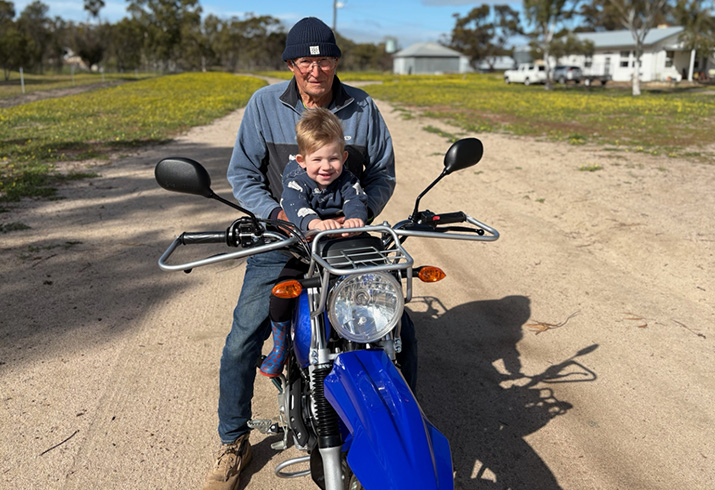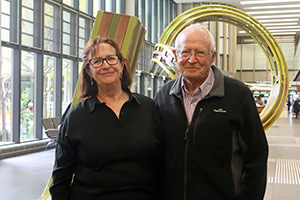Back on the farm is the best evidence for stem cell transplant trial
 Paul Smith is cured of cancer, working on a friend’s farm and enjoying visits from his children and grandchildren.
Paul Smith is cured of cancer, working on a friend’s farm and enjoying visits from his children and grandchildren.
At 70 years old, Paul Smith of Leeman was diagnosed with life-threatening myelodysplasia, a bone marrow cancer that can transform to acute leukaemia, the treatment for which included an allogenic stem cell transplant.
Paul was referred to Fiona Stanley Hospital (FSH) Clinical Haematologist, Dr Duncan Purtill and enrolled in the BM12 CAST trial, a major clinical trial led by the Australasian Leukaemia and Lymphoma Group.
FSH was one of eight hospitals participating in the trial across Australia and New Zealand.
The results published in the New England Journal of Medicine this year have transformed a 40-year-old standard practice for treatment of blood cancers.
It demonstrated that the use of new, less toxic drug combination after allogenic stem cell transplants for leukaemia significantly improved patient outcomes post-transplant, reducing the risk of life-threatening complications like Graft Versus Host Disease (GVHD).
The new drug combination tripled the number of patients that were free from GVHD and relapse three years after transplant.

Paul’s siblings were tested for compatibility to provide him with a lifesaving matched related stem cell transplant. Paul’s younger sister, Sharon (pictured right with Paul) was compatible.
Paul was admitted to FSH a week prior to the transplant to receive chemotherapy. Sharon’s stem cells were extracted and transplanted to Paul. Paul received the trial drug combination of cyclophosphamide (PTCy) on days 3 and 4 and ciclosporin from day 5 after the stem cells were infused to reduce the risk of complications.
Paul spent a month in hospital recovering from the procedure. He said he was weak from the treatment; but he had no further side effects. He described his cancer journey as “boring” in response to how well he felt post treatment.
On discharge from hospital, Paul spent six weeks in the Leukaemia Foundation supplied accommodation in Perth returning to FSH for weekly blood tests and bone marrow biopsies.
On discharge, and in the critical 100 days post-transplant, Paul had no symptoms of GVHD, which contributes to death or life-long illness in at least 20 per cent of patients undergoing a blood stem cell transplant.
Paul is now three years post-transplant, in remission and considered cured of cancer. He has continued to get stronger without any further signs of cancer or side effects from his transplant.
Paul is helping on a friend’s farm in the wheatbelt outside of Quairading. He said his experience of cancer, has left him a much more tolerant person, “nothing phases me now.”
Paul enjoys regular visits to the farm from friends and his two sons and five grandchildren aged between two and 15.
Fiona Stanley Hospital treats about 60 patients with an allogeneic stem cell transplant each year in Western Australia.
Since the publication of the BM12 CAST trial results all patients will now receive the new form of GVHD prophylaxis as the new standard of care, for its significantly improved outcomes.
Keep up to date with our news and achievements
Find out more on Facebook (external site) or LinkedIn (external site)

